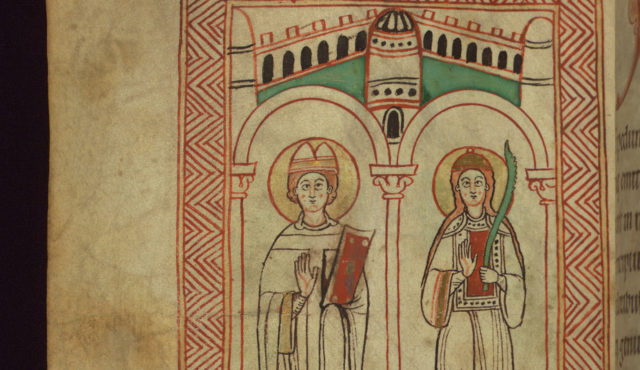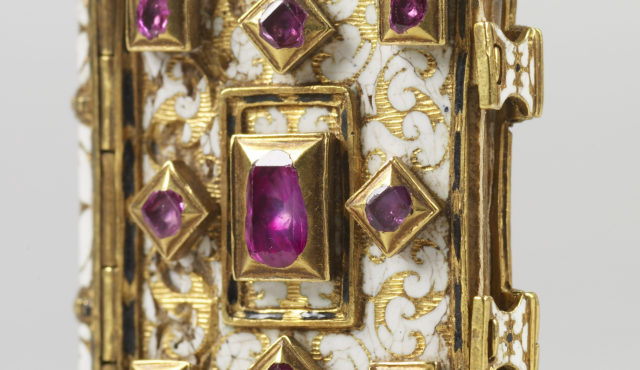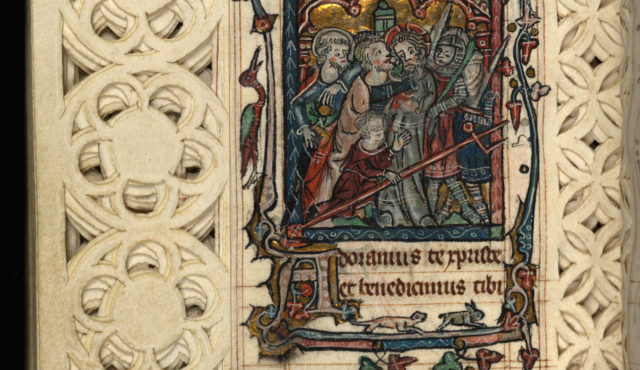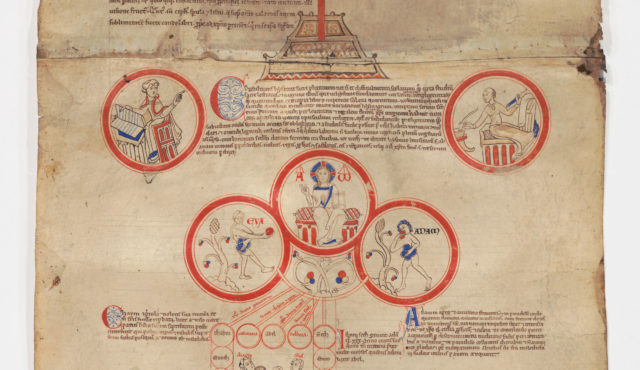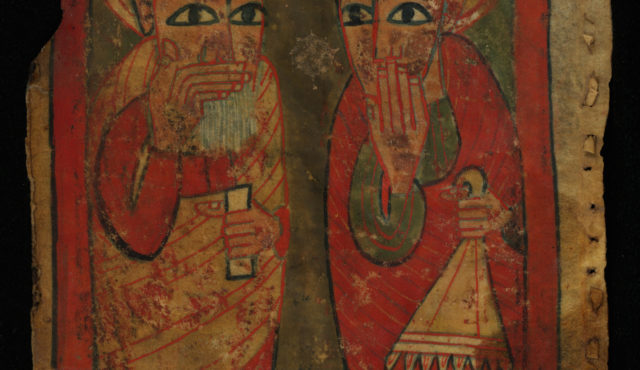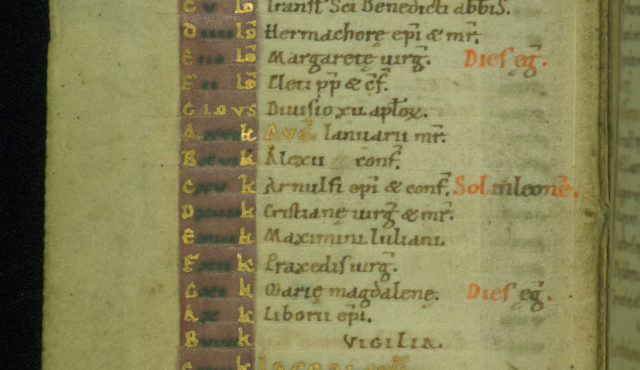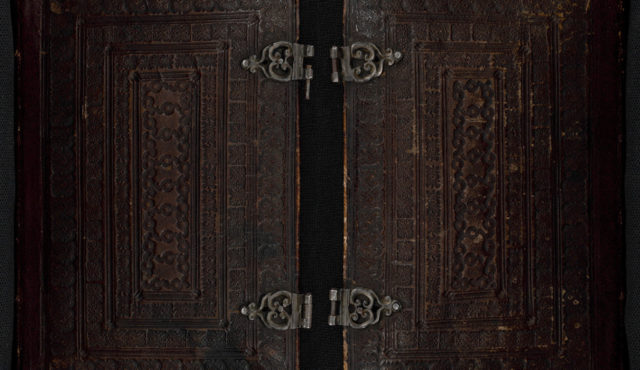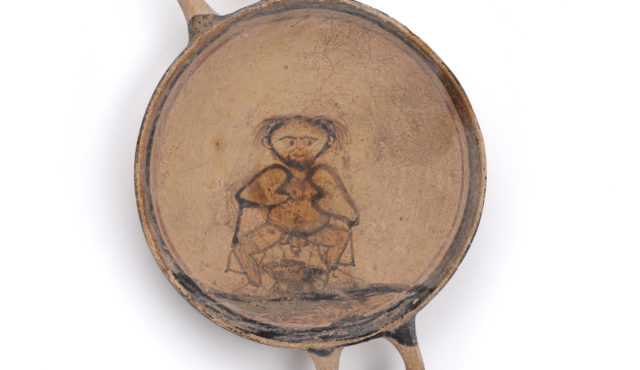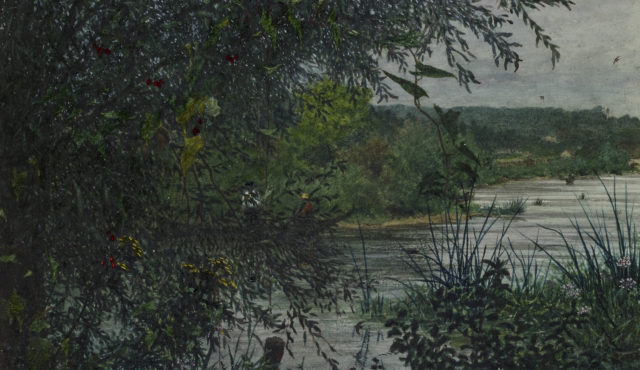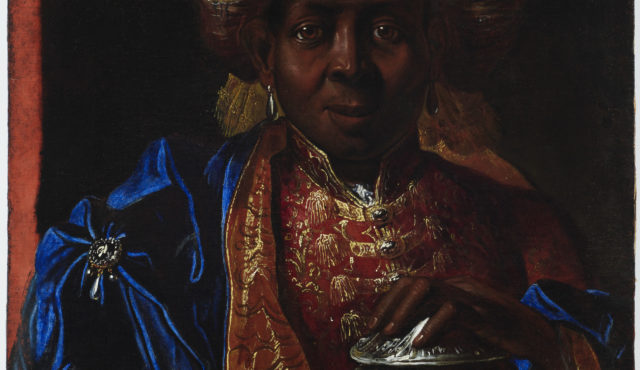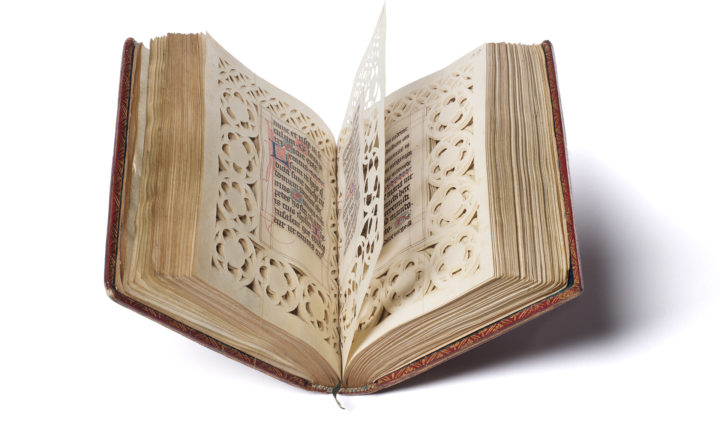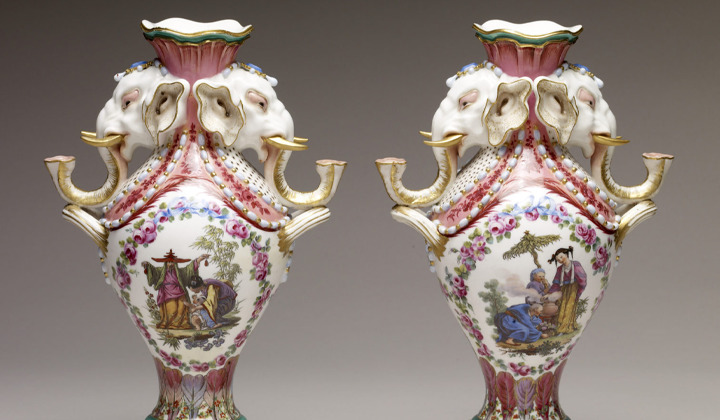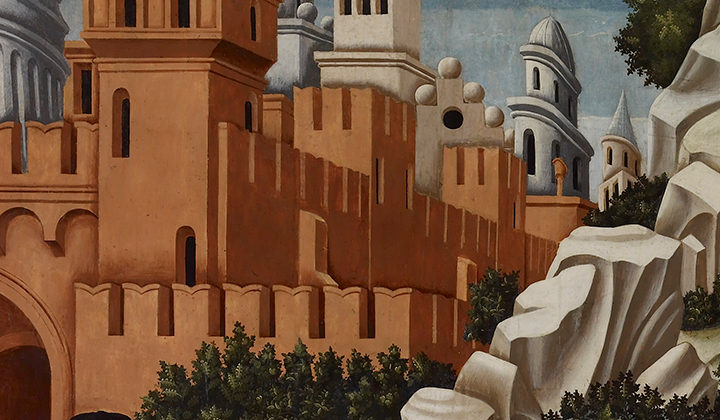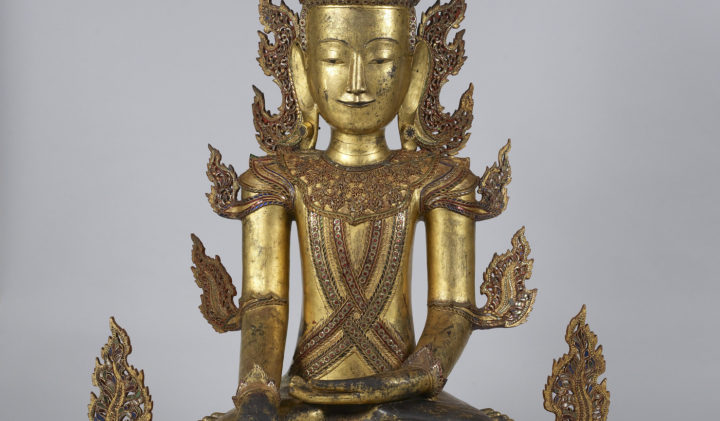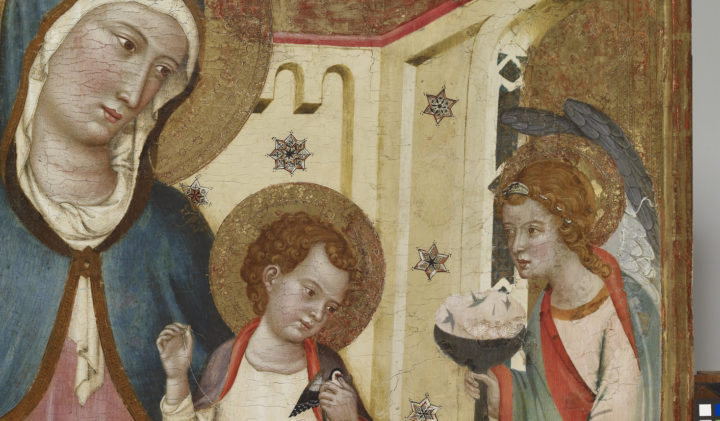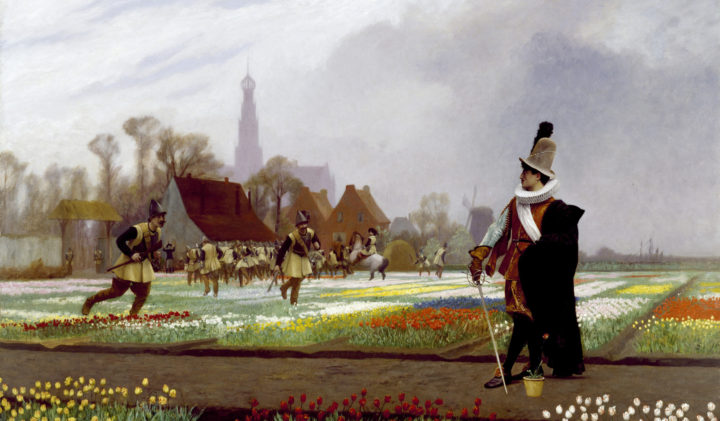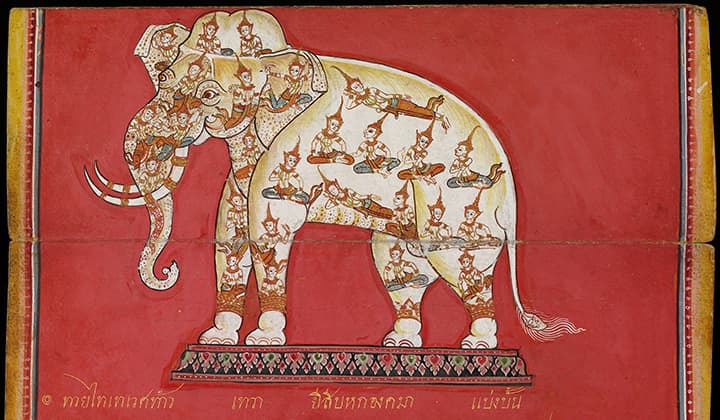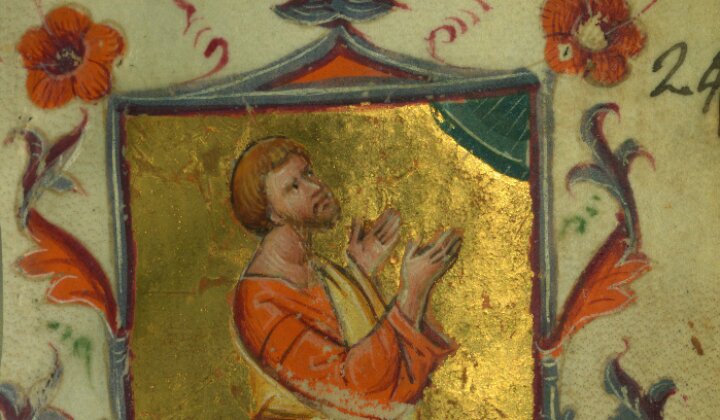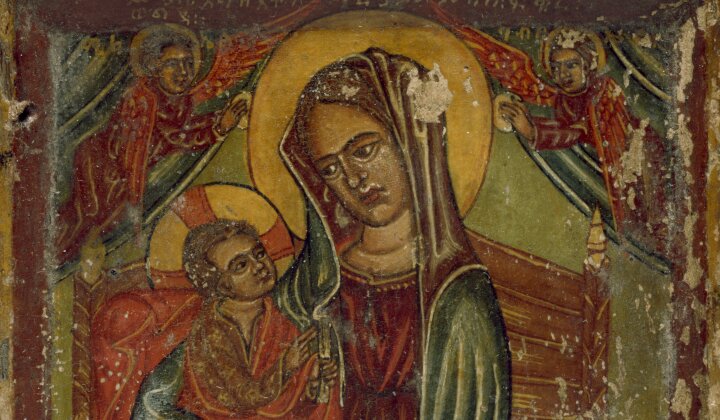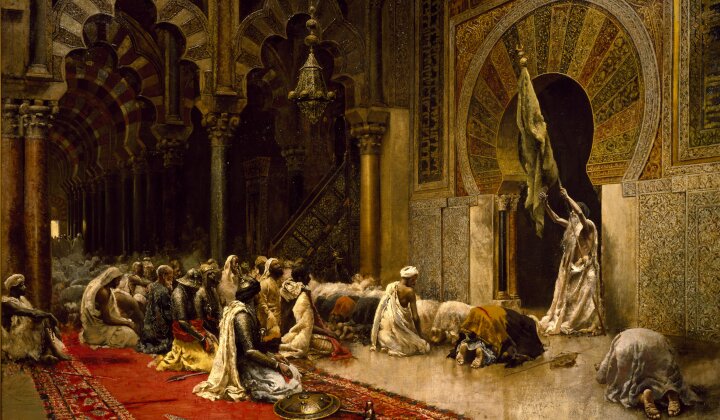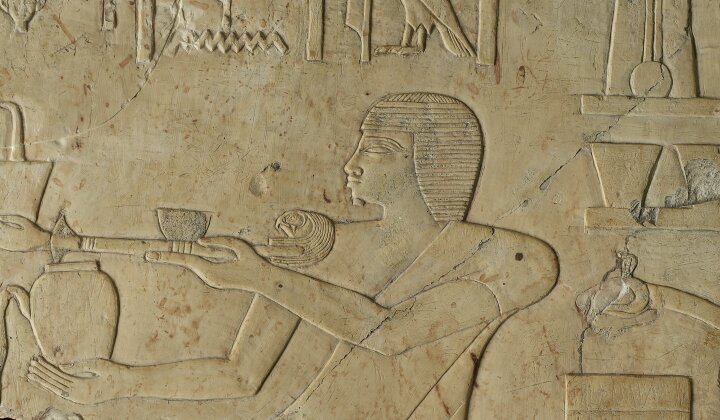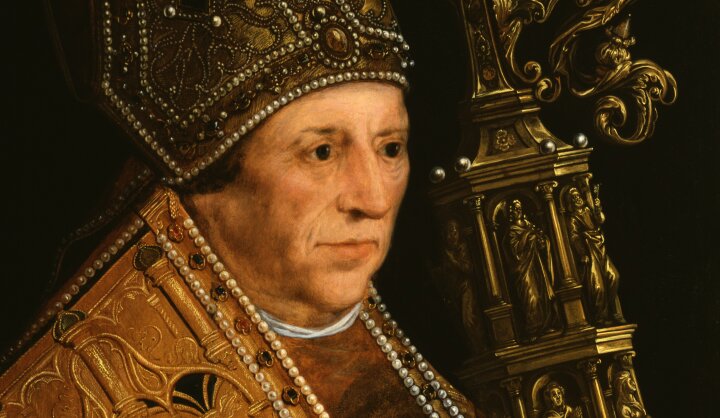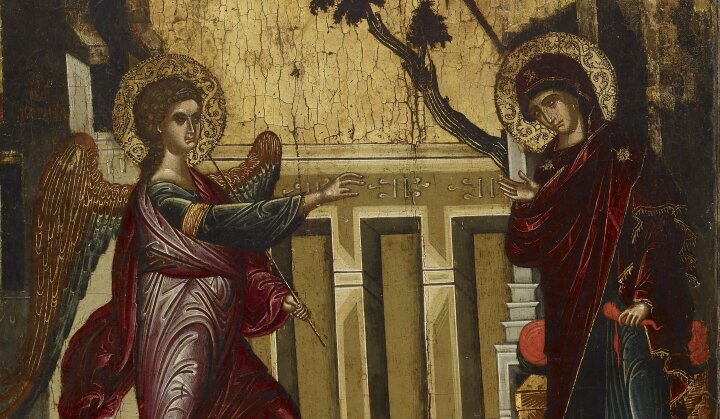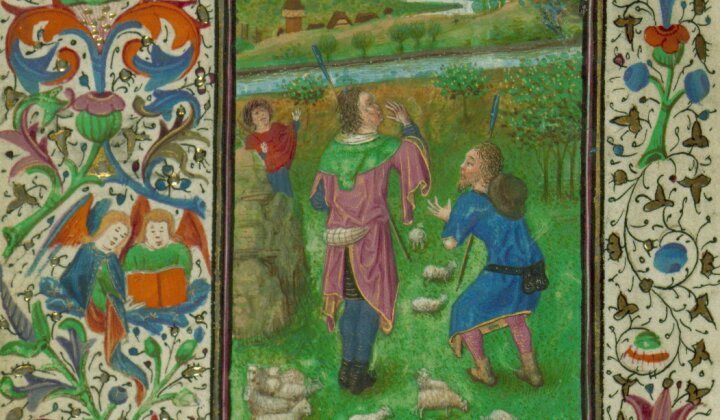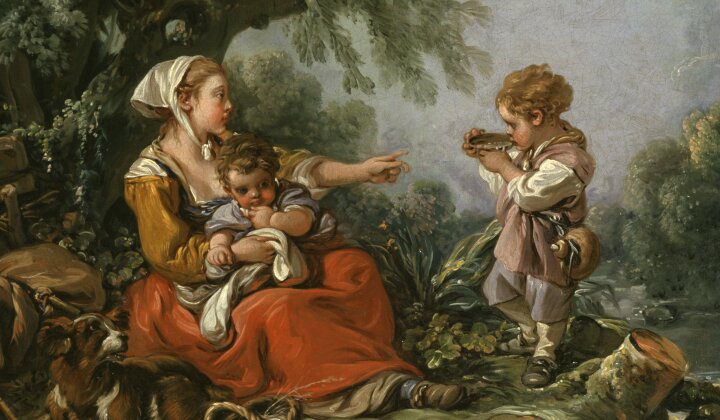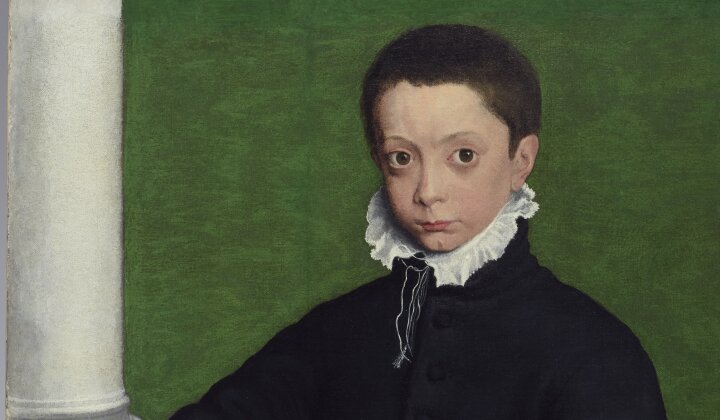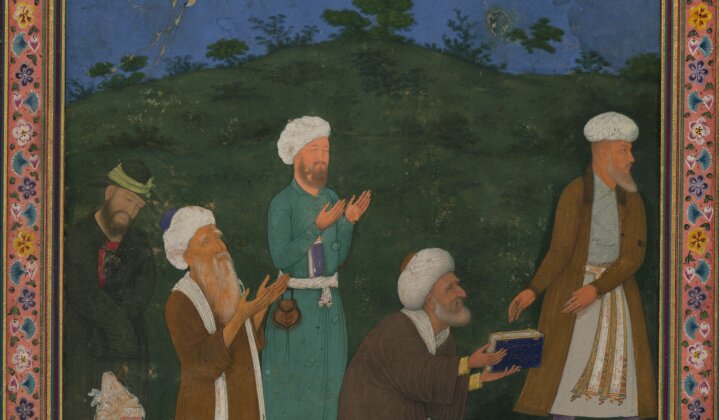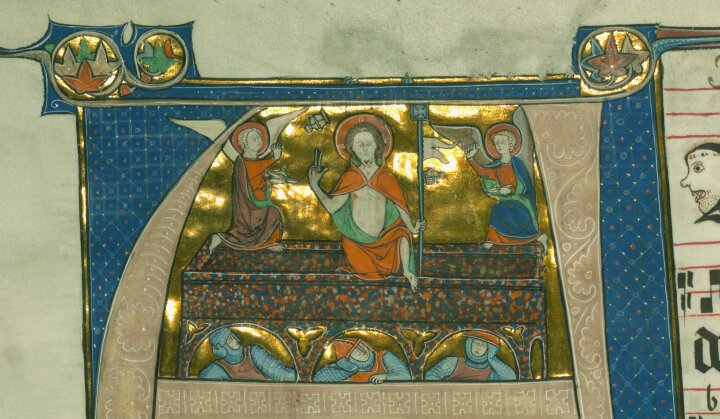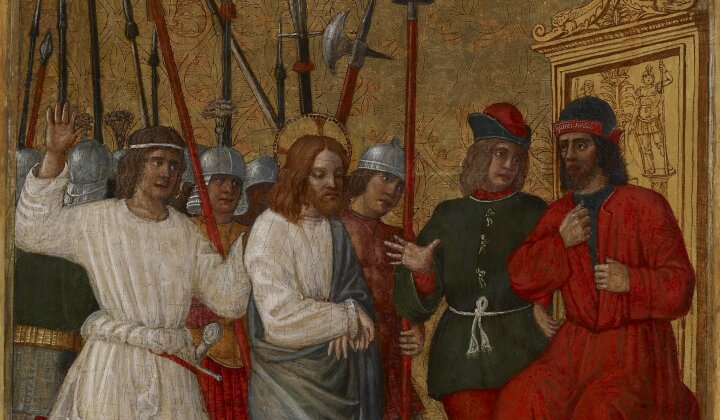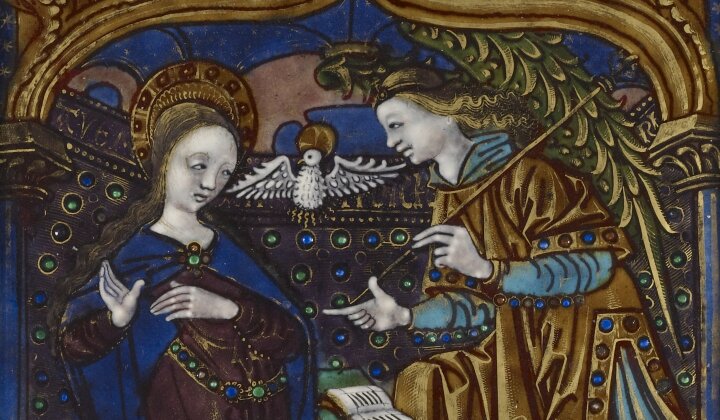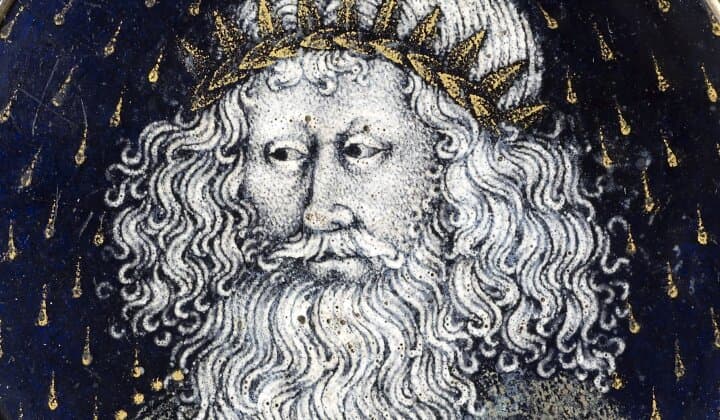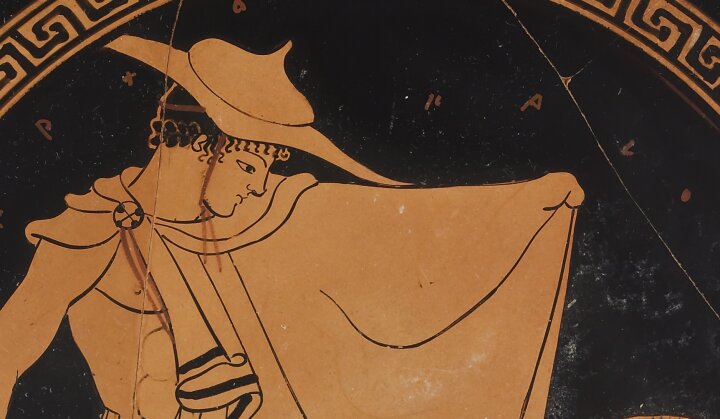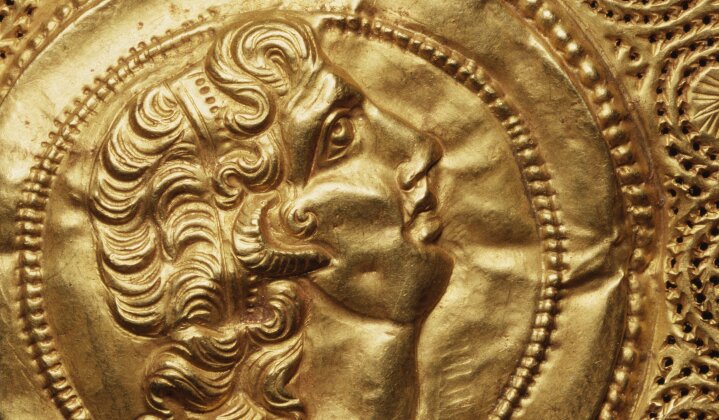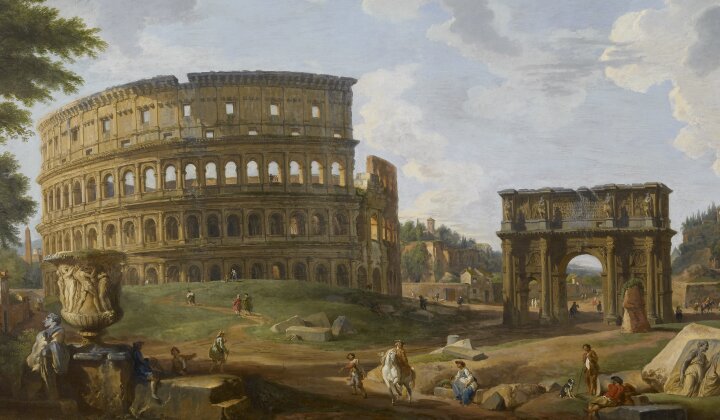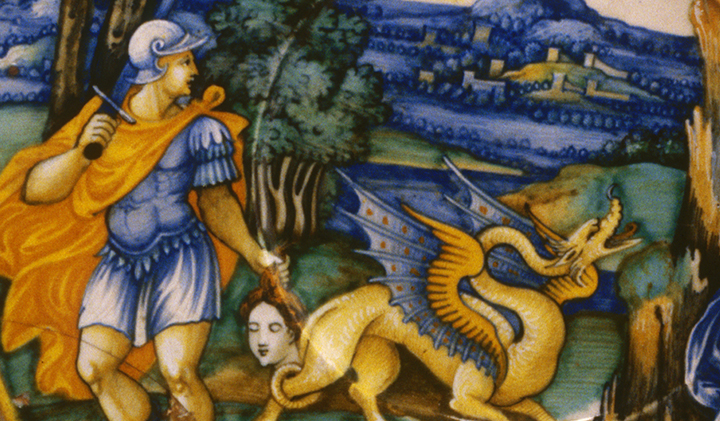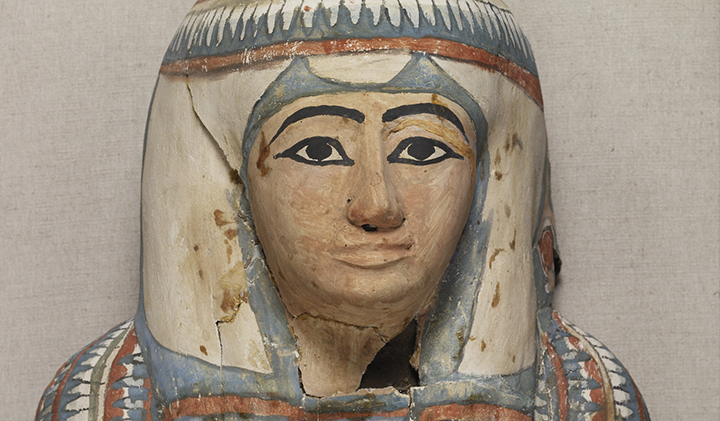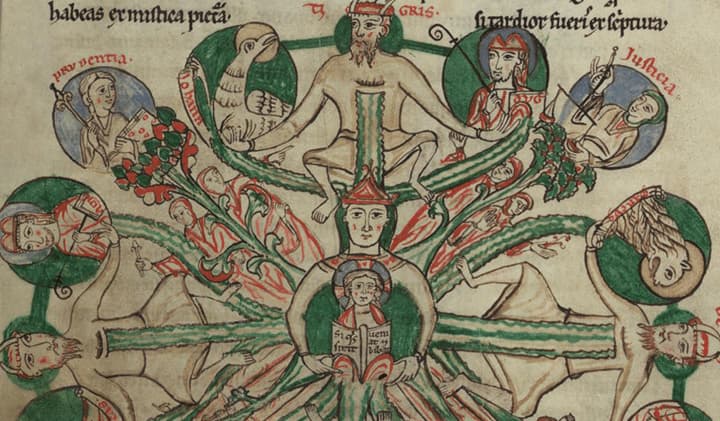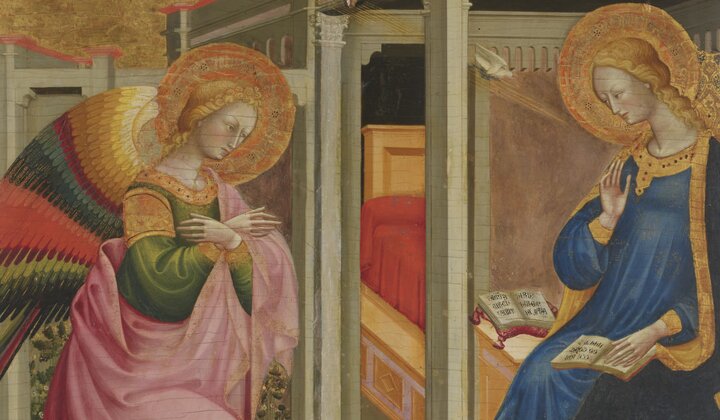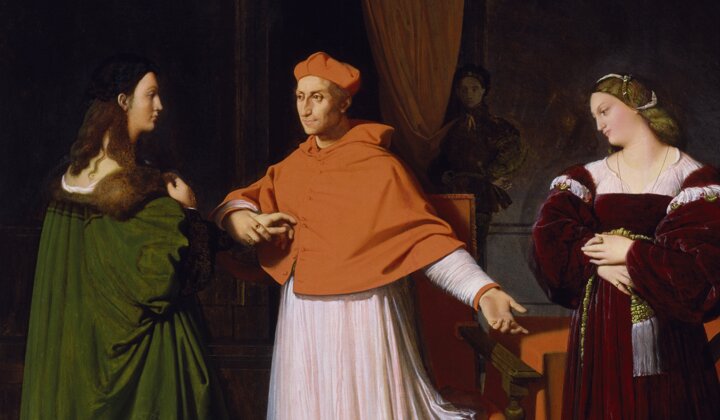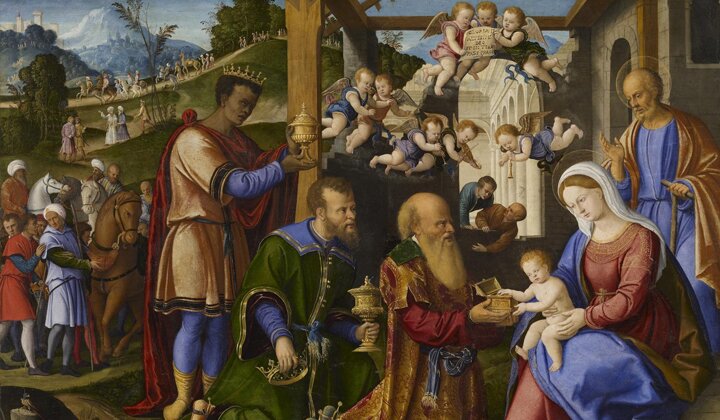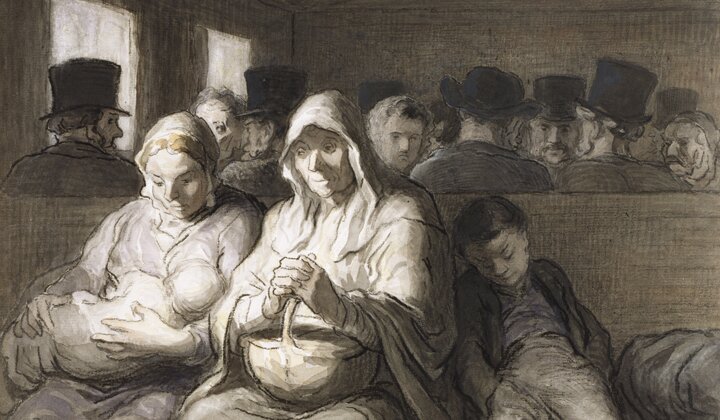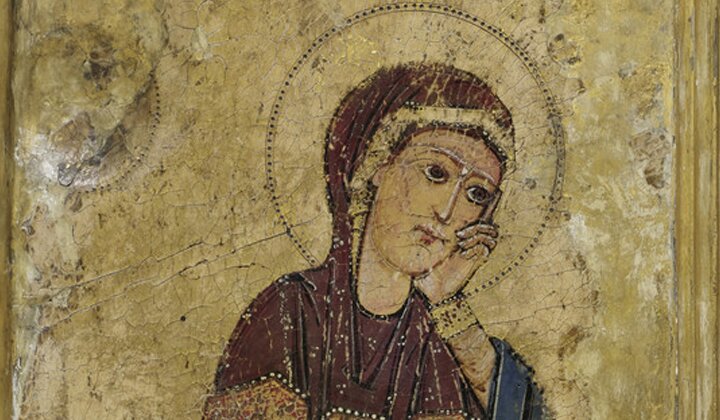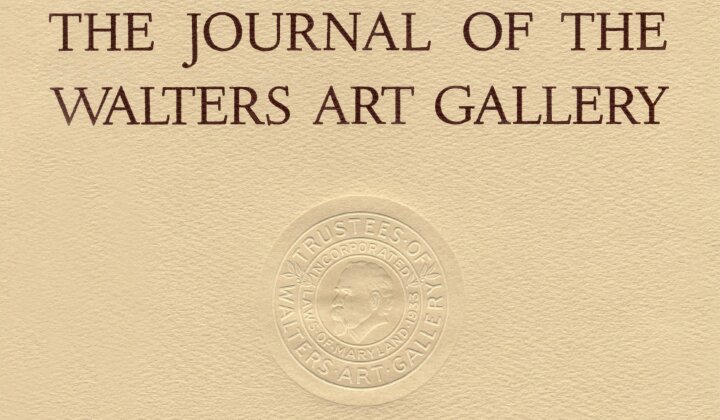I

Antonio da Fabriano II (Italian, active 1451–1489), Saint Jerome in His Study, 1451, tempera, oil (?), and gold leaf on wood panel. The Walters Art Museum, Baltimore. Acquired by Henry Walters, 1911–1912, acc. no. 37.439
In 1451, in the small town of Fabriano in the green foothills of the Apennine Mountains one hundred miles northeast of Rome, an unusual picture of Saint Jerome in His Study was painted (fig. 1). Considered the masterpiece of the artist Antonio da Fabriano,[1] it pictures Jerome symbolically dressed in a long, draped robe with a red cardinal’s hat and tame lion by his side, while translating the ancient Greek and Hebrew Bible into Latin.[2] This legendary image of Jerome in his studio was not new. It was preceded by similar images of Jerome painted by Benedetto di Bindo in 1400 (fig. 2), Lorenzo Monaco in 1420 (fig. 3), and Jan van Eyck in 1435 (fig. 4).
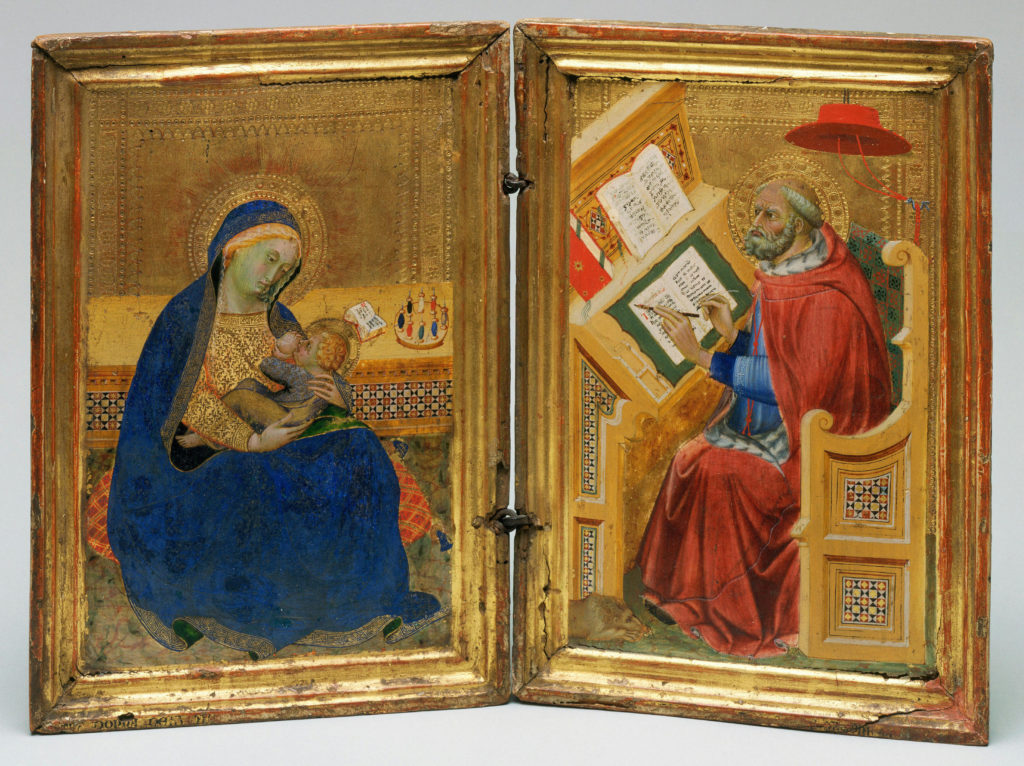
Attributed to Benedetto di Bindo (Italian, active Siena and Perugia, d. 1417), Saint Jerome Translating the Gospel of John (right panel of diptych), ca. 1400–1405, egg tempera, silver and tooled gold on panel. Philadelphia Museum of Art, John G. Johnson Collection, 1917, acc. no. Cat. 153
In one important way, however, the painting of Jerome made in 1451 by Fabriano was significantly different. The earlier paintings pictured Jerome crowded inside a small, one-room monastic cell (fig. 2). In contrast, Antonio da Fabriano’s painting brought Jerome into the present, in the town of Fabriano, seated in a bright, wide-open, two-room suite that contained references to art and culture, and that was designed for a humanist scholar in 1451.
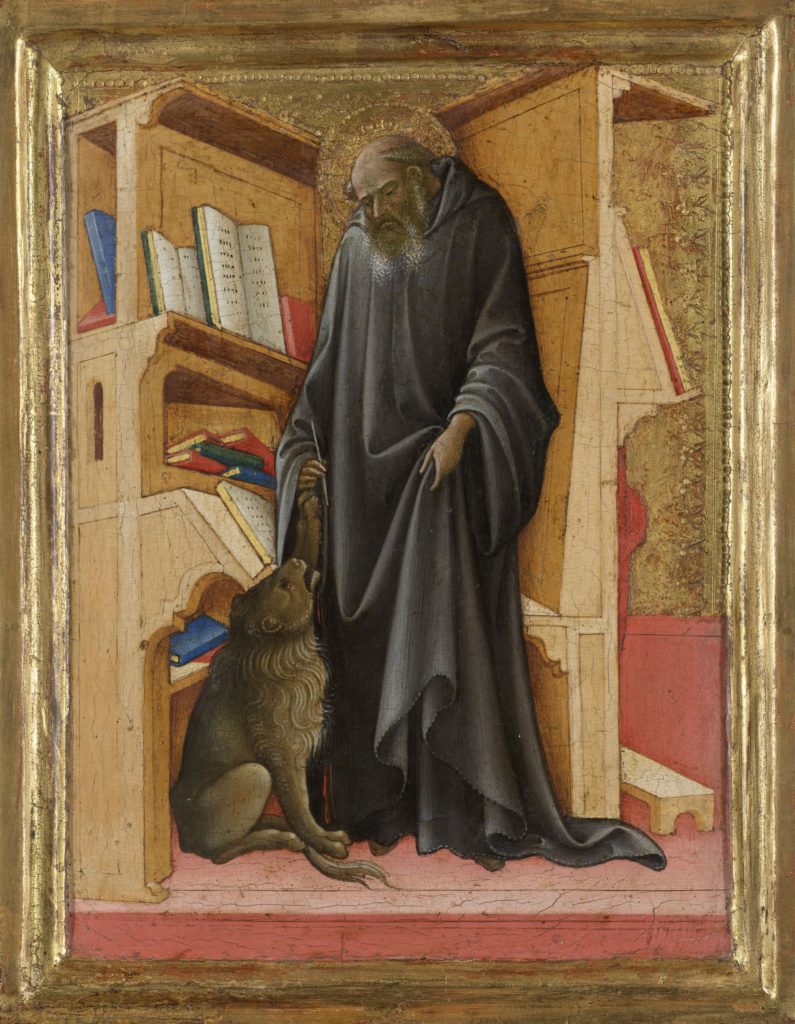
Lorenzo Monaco (Italian, ca. 1370–1425), Saint Jerome in His Study, ca. 1420. Rijksmuseum, Amsterdam, acc. no. SK-A-3976

Jan van Eyck (Netherlandish, ca. 1395–1441), Saint Jerome in His Study, ca. 1435, oil on linen paper on oak panel. Detroit Institute of Arts, City of Detroit Purchase, acc. no. 25.4
The year 1451 undoubtedly had special significance to Antonio da Fabriano and those who commissioned the painting. In dating the painting, Antonio did not follow the conventional practice of inscribing the year in Roman numerals next to his own name on the frame of the painting. Instead, he painted “1451” in tall, neat Arabic numerals virtually in the center of the painting on a fictive cartellino that was prominently affixed to the front of Saint Jerome’s desk (fig. 5).

Detail of fig. 1. Cartellino with “1451” painted on front of Saint Jerome’s desk in Antonio da Frabriano’s Saint Jerome in His Study
The exquisite design of the cartellino signaled that it was intended to convey much more than the date of the painting. It was no simple label but one whose ends were elegantly scrolled and carefully bathed in light and shadow, as if to suggest that it carried a historical meaning. Like a latchkey, the dated cartellino unlocked the meaning of the painting and conveyed that 1451 was a year in the history of the town of Fabriano that was worthy of commemoration.
II
In December 2008, while researching and writing an article about this painting, I discovered in the files of the Walters Art Museum an important clue that explained the significance of 1451. It was in the form of a letter to the then-Director of the Walters from a renowned Italian art historian and professor named Fabio Marcelli, who resided in Fabriano and served as the city’s Minister of Culture.[3] Marcelli wrote that the prominent date of 1451 in the painting was intended to “document” the important presence of Pope Nicholas V in Fabriano around that time and his connection to this painting. I brought Marcelli’s letter to the attention of the Director of the Walters, suggesting that it might clarify and contribute significantly to the museum’s existing description.[4] Thereafter, I contacted Marcelli to determine whether he had any additional information that supported his contention. Marcelli in turn invited me to visit Fabriano to study firsthand the city’s art and architecture, to appreciate its history, to grasp the significance of 1451, and in general to better understand the meaning of the painting. It was a trip worthwhile.
III
In 1445, the town of Fabriano became a part of the Papal States. In 1447, when Pope Nicholas V became the pope, he also simultaneously became the ruler of Fabriano. In July 1449, Pope Nicholas V visited Fabriano. He was welcomed by its residents, he spent the night in his castle, and became so enamored with Fabriano that he began to look upon it as a second home.[5]
Pope Nicholas was revered as a great intellect, the most acclaimed bibliophile of his day, and the first humanist pope.[6] Shortly after his elevation to the papacy, Pope Nicholas founded the Vatican Library and proceeded to acquire well over one thousand books pertaining to early Christian theology.[7] Like other humanists at that time, Nicholas revered Saint Jerome and gradually acquired one of the largest collections of his books.[8]
In addition to his love of literature, Pope Nicholas was also devoted to art and architecture. He commissioned the Florentine Fra Angelico (ca. 1400–1455) to paint frescoes for the Vatican chapel, and with the advice of two great architects, Leon Battista Alberti (1404–1472) and Bernardo Rossellino (1409–1464), Pope Nicholas embarked on an innovative plan to renovate Rome.[9]
In the summer of 1450, a great plague decimated Rome. All the churches and hospitals were full of the sick and dying. As a result, in July of that year, Pope Nicholas fled Rome and headed for Fabriano, where he would remain for the following three months. Borrowing from the momentous architectural plans that he employed in Rome, Pope Nicholas initiated an ambitious plan to reconstruct Fabriano. Using red brick as a primary building material, the plan focused on enlarging the town’s piazza, refurbishing its church and castle, and strengthening its fortifications.[10]
Pope Nicholas’s reconstruction of Fabriano was widely heralded. According to his primary biographer, “While there, he [Nicholas] never abandoned the project of books and building which he had begun.”[11] Completed in 1451, Pope Nicholas’s reconstruction of Fabriano was hailed by its residents and praised by Pope Nicholas himself. In his last testament written shortly before his death, Nicholas described his project in Fabriano as one of his most “magnificent” architectural accomplishments.[12] Over the course of time, this praise was echoed by scholars who used the words “great” and “splendid” to describe Pope Nicholas’s accomplishment in Fabriano.
IV
There is little doubt that Antonio da Fabriano’s depiction of Saint Jerome in a two-room suite dated 1451 was influenced by the commanding presence of Pope Nicholas— his reconstruction of Fabriano and his embrace of the intellectual and cultural principles of humanism. In and around 1451, paintings of Jerome in his studio became increasingly popular among humanists. These paintings were not intended as stale pictures of the past but as inspiration for the future.[13] As poetically expressed by the art historian Bernard Berenson, art at that time was “not only what to see, but what to be.”[14]
Consistent with this principle, Antonio da Fabriano’s decision to place Jerome in a bright two-room suite was obviously not intended to depict the saint in isolation but instead to portray this fictive suite as accessible to Fabriano’s growing community of humanists who sought to learn from him. It also reflected the emerging interest of humanists, led by Pope Nicholas, to construct libraries composed of two rooms—one room for the humanist to occupy and the other for the growing intellectual public to visit.[15]
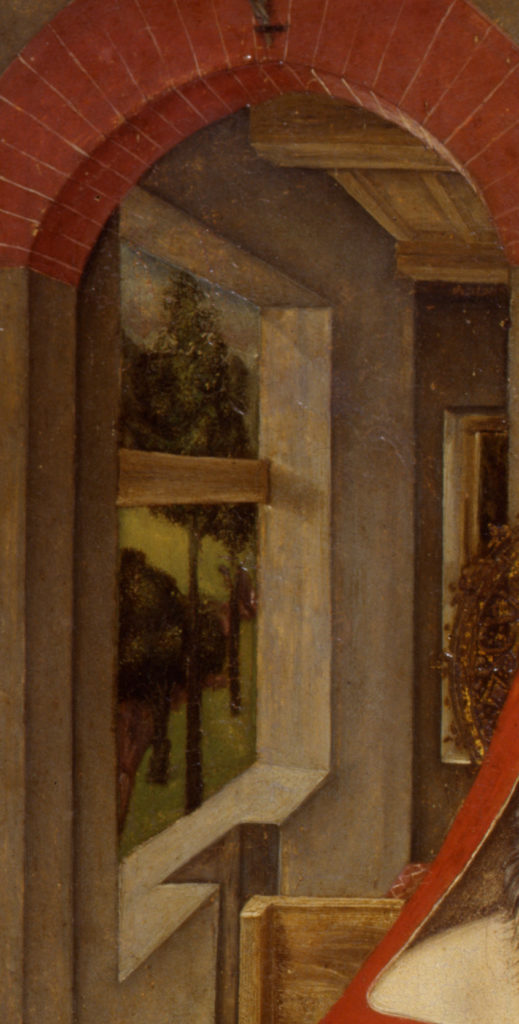
Detail of fig.1. A hillside of trees seen outside the window of the second room in Antonio da Frabriano’s Saint Jerome in His Study
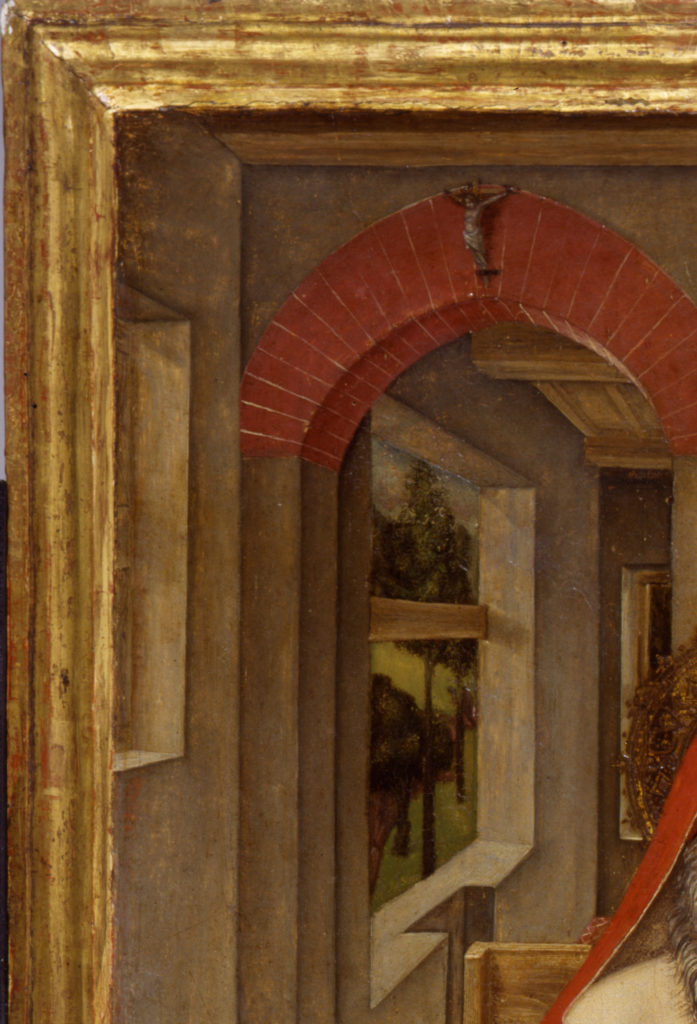
Detail of fig.1. A rectangular and gold frame on the back wall of the second room in Antonio da Frabriano’s Saint Jerome in His Study
Around this time, humanists embellished their libraries and studies (referred to as studiolo) with visual culture, and they began to install paintings on the walls of these spaces. Like the books that were on the shelves, these paintings were intended to be studied and read.[16] Antonio da Fabriano was among the earliest of artists who were commissioned to create art for a library, as evidenced by a painting that he made for the Dominican Library in Fabriano.[18] Referring to the innovative practice of placing art in a library or studiolo, Antonio’s painting of Saint Jerome in His Study included a picture frame hanging from the wall in the second room of Jerome’s study (fig. 6). To identify the object in the painting as a picture frame (not a window), Antonio copied the rectangular shape and gold color of the physical frame that bordered and decorated his painting (fig. 7).[18]
V
To obtain a more thorough and careful reading of the iconographic objects in the painting, in January 2011, I went to Fabriano. With the guidance of Fabio Marcelli and the image of the Walters’ Saint Jerome in His Study in mind, I studiously toured the streets and surroundings of the town, including the remaining old libraries, churches, and museums, and most importantly, I examined a large fresco painted by Antonio da Fabriano on the wall of the town’s Dominican Library. What I discovered was that Antonio’s painting not only placed Saint Jerome in a humanist study, but also specifically placed Jerome and his study in Fabriano.
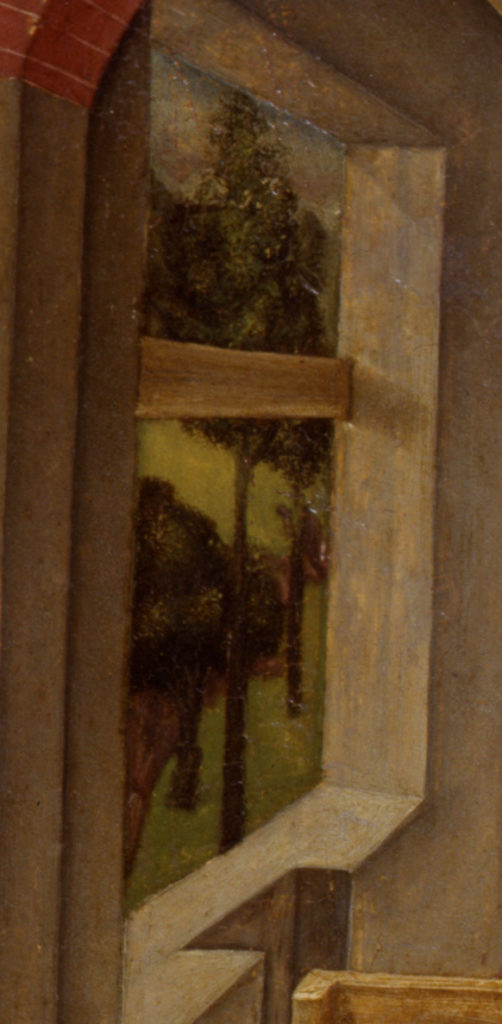
Detail of fig. 1. Trees outside window in Antonio da Fabriano’s Saint Jerome in His Study
One of the key iconographic objects in the painting that placed Jerome’s study in Fabriano was a grove of five tall trees on the side of a hill that could be seen outside the window of Jerome’s study (fig. 8). The town of Fabriano was surrounded by hills full of trees, and Antonio da Fabriano clearly wanted this to be seen. The obvious purpose of depicting a hill full of trees in the painting was to convey that Jerome and his study were there.
Even more informative, as noted above, was the large fresco by Antonio da Fabriano painted around 1480 on the wall of the town’s Dominican Library.[19] Pictured in the center of the fresco is a dominating image of Christ the Savior and pictured on each side of Christ is a scholarly female saint seated at her desk in the Dominican Library (fig. 9).[20]
According to the great Italian art historian Pietro Zampetti, the studious seated female on the right side of the fresco portrays St. Catherine.[21] In the fourteenth century, Catherine famously wrote hundreds of letters that were viewed as great works of religious literature and that led to her canonization in 1461 as a Doctor of the Church. In light of her well known history, recent canonization and membership in the Dominican Order, the image of Catherine served to symbolize the principles of religious Dominican scholarship.
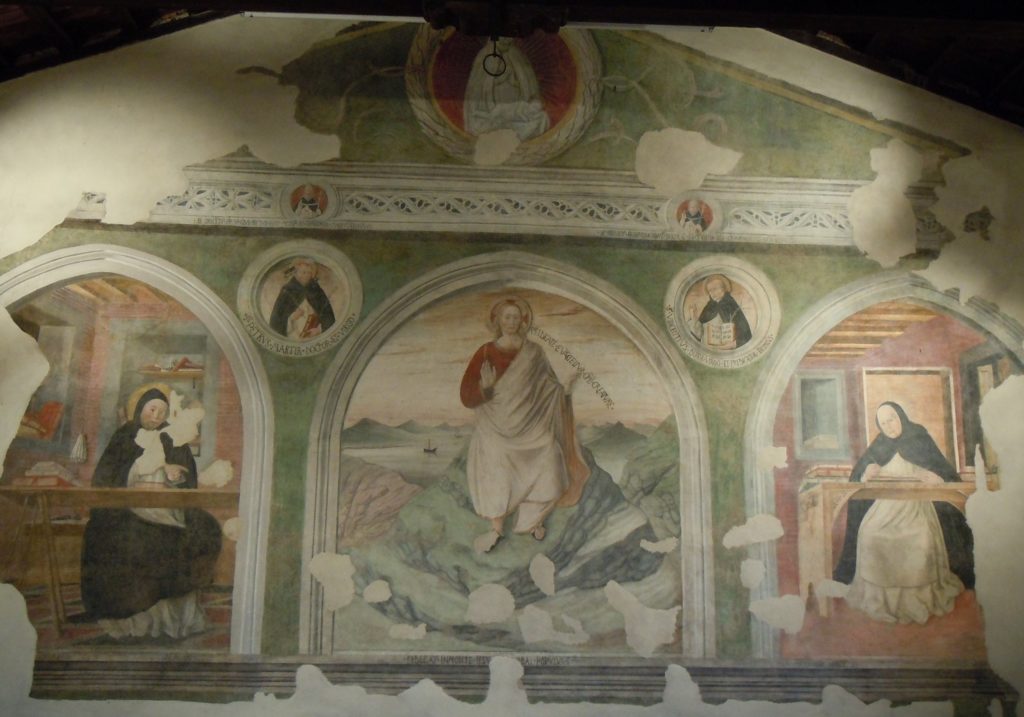
Antonio da Fabriano II (Italian, active 1451–1489), Christ the Redeemer Landscape, ca. 1480, fresco. Museo della carta e della filigrana, Fabriano. Photograph by author, Jan. 12, 2011
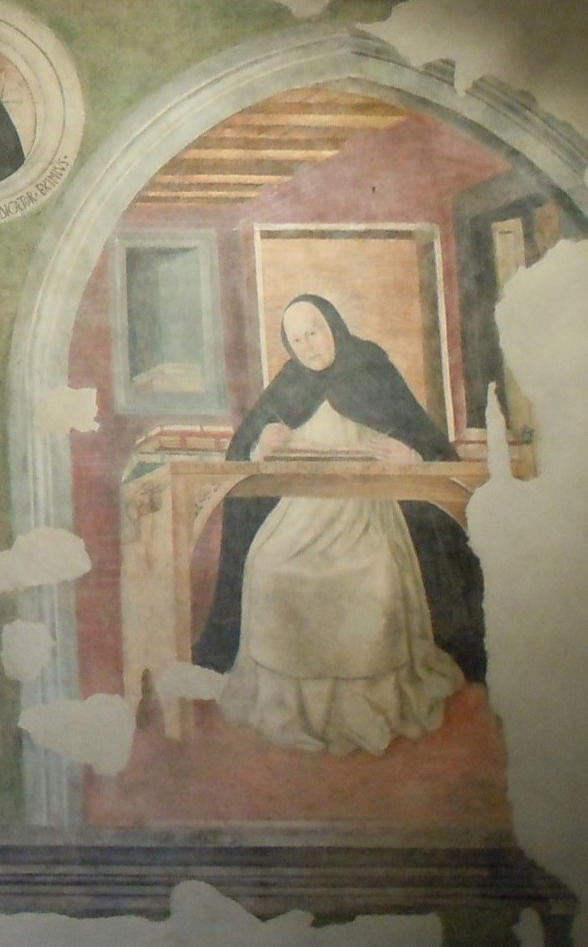
Detail of fig. 9. Image of St. Catherine in the Dominican Library in Antonio da Fabriano’s Christ the Redeemer Landscape
Understanding the local familiarity with St. Catherine, Antonio depicted her in a study that was likewise familiar to the people of Fabriano. Catherine’s study in the fresco is very similar to Jerome’s study in the painting. The desks of both Catherine and Jerome have the same height, size, and transparency. Antonio carefully placed the hands of both in precisely the same place on the top of their desks, as if one were mirroring the other. Furthermore, both desks are situated on red brick floors, next to indented shelves, and under wooden beam ceilings (fig. 10). The similarity of Jerome’s and Catherine’s studios provide ample evidence that Antonio did not intend to place Jerome’s study in Bethlehem one thousand years ago, but instead in the familiar Dominican Library designed for the people of Fabriano.
Aside from this fresco, the most telling evidence of Antonio’s intent to picture Jerome in Fabriano is the red brick herringbone floor in Jerome’s studio. Antonio clearly wanted this fancy floor to be noticed. It not only appears to go under Jerome’s desk, but also across the entire room. Moreover, the size of the bricks in the front of Jerome’s desk created the illusion that the viewer had entered the studio and was standing on them.
At the time of this painting, and at the direction of Pope Nicholas, red bricks were being extensively used to pave the streets of Fabriano, including a long corridor known as the Loggiato of San Francesco in the center of the town (fig. 11). The bricks in the pavement of this corridor, like all the bricks on the floor of Jerome’s study, were spaced in a herringbone fashion.
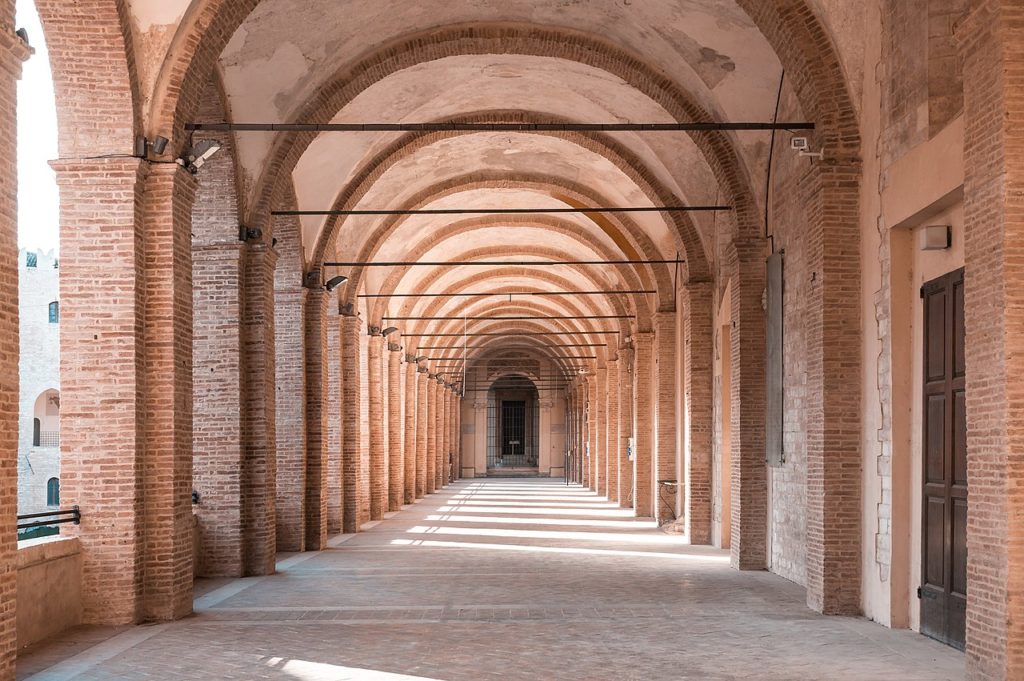
Loggiato of San Francesco, Fabriano, paved with red herringbone bricks. Photograph by User: Verdenex84 / Wikimedia Commons / CC BY-SA 4.0
The similarity of the red bricks found throughout the city and fictively inside the painting of Jerome’s study likely created in the mind of any viewer the idea that Jerome’s studio was in Fabriano. And thanks to Pope Nicholas, the viewer also would likely imagine that he had entered a two-room humanist study, stood on the red bricks in front of the desk, looked delightfully around, and rejoiced that it was 1451 and Saint Jerome was in Fabriano.
[1] For descriptions of the life and art of Antonio da Fabriano and references to Saint Jerome in His Study as his “masterpiece,” see Morton H. Bernath, “Notes on Central Italian Painters,” American Journal of Archaeology, 15, no. 3 Vol. XV (1911): 340‒48 at 343‒46, https://doi.org/10.2307/497413; and Morten Steen Hansen and Joaneath A. Spicer, eds., Masterpieces of Italian Paintings: The Walters Art Museum (Baltimore: The Trustees of the Walters Art Gallery, 2005), 72–73; see also Pietro Zampetti, Paintings from the Marches: Gentile to Raphael (London: Phaidon, 1971), 36‒41.
[2] Jerome was born around 345 CE and died around 420. In 386, he settled in Bethlehem, and between 391 and 406, he translated the bible into Latin. For a factual history of his life, see Eugene F. Rice, Jr., Saint Jerome in the Renaissance (Baltimore: Johns Hopkins University Press, 1985), 1‒22; and Walter John Burghardt, “St. Jerome,” Encyclopedia Britannica (2020), https://www.britannica.com/biography/Saint-Jerome.
[3] The letter from Marcelli to the former Director of the Walters Art Museum has been preserved in the museum’s curatorial records.
[4] For the Walters’ description of the painting at that time, see Hansen and Spicer, Masterpieces of Italian Painting, 72. The description failed to explain the significance of “1451,” referring to it only as a “piece of paper.” It also did not refer to Jerome’s bright two-room study, stating instead that Jerome was pictured in a “cold monastic cell.”
[5] Pope Nicholas (born Tommaso Parentucelli) was born on November 13, 1397, and became the pope on March 6, 1447. For information about Pope Nicholas V’s connection to the town of Fabriano, see Charles Burroughs, From Signs to Designs: Environmental Process and Reform in Early Renaissance Rome (Cambridge, MA: The MIT Press, 1990), 134‒138, 192, 209‒10, 212, 216, 247, 272, 279‒80, and 291; and Ludwig Pastor, The History of the Popes, Vol. II (London: Kegan Paul, Trench, Trubner & Co., 1906), 3‒214.
[6] For this information about Pope Nicholas’s life and activities as a humanist, see John Marciari, Art of Renaissance Rome: Artists and Patrons in the Exernal City (London: Laurence King Publishing, 2017), 47‒50. See also, Christopher S. Celenza, The Intellectual World of the Italian Renaissance (Cambridge: Cambridge University Press, 2018), 129, 156, and 237; Christine Smith and Joseph F. O’Connor, Building the Kingdom: Giannozzo Manetti on the Material and Spiritual Edifice (Tempe, AZ: Arizona Center for Medieval and Renaissance Studies, 2006); Carroll William Westfall, In This Most Perfect Paradise: Alberti, Nicholas V, and the Invention of Conscious Urban Planning in Rome (University Park, PA: Pennsylvania State University Press, 1975); and Anthony Grafton, ed., Rome Reborn: The Vatican Library and Renaissance Culture (New Haven, CT: Yale University Press, 1993).
[7] Grafton, Rome Reborn, 34.
[8] Pastor, The History of the Popes, 213.According to Pastor, Pope Nicholas had more books written by Saint Jerome in his library than by any other writer except St. Augustine.
[9] For descriptions of Nicholas’s reconstruction of Rome, see Marciari, Art of Renaissance Rome, 45‒49; and Henry A. Millon, The Renaissance from Brunelleschi to Michelangelo: The Representation of Architecture (New York: Rizzoli, 1997), 399.
[10] The use of brick in the reconstruction of Fabriano undertaken by Pope Nicholas in the middle of the fifteenth century is discussed in Charles R. Mack, “Bernardo Rossellino, L.A. Alberti and the Rome of Pope Nicholas V,” Southeastern College Art Conference Review 10 (1982), 60‒69, Appendix 1 (“Fabriano), n.39.
[11] Smith and O’Connor, Building The Kingdom, 383‒85.
[12] Pastor, The History of the Popes, 312.
[13] Rice, Saint Jerome in the Renaissance, 105‒108.
[14] Bernard Berenson, The Italian Painters of the Renaissance (London: Oxford University Press, 1939), 178.
[15] For a description of an ideal fifteenth-century humanist library composed of two rooms with light entering from large windows, which replaced the dark rooms of the past, see Anthony Grafton, “The Humanist as Reader,“ in Guglielmo Cavallo and Roger Chartier, eds., A History of Reading in the West, (Amherst, MA: University of Massachusetts Press, 1999), 184–85 (transl. Lydia Cochrane); and Anthony Grafton, “Commerce with the Classics,” in Paula Findlen, ed., The Italian Renaissance, (Malden, MA: Blackwell Publishing, 2002), 247, 249, 252, and 254. For references to Pope Nicholas’s personal library consisting of two rooms, see David McCue, “Founder of the Vatican Library,” The Journal of Library History 16, no. 1 (1981): 122-33 at 122‒23.
[16] For information about the interest of humanists in displaying paintings in their libraries or studios and treating the art as a form of knowledge, see Stephen J. Campbell, The Cabinet of Eros (New Haven and London: Yale University Press, 2004), 42‒48; and Celenza, The Intellectual World of the Italian Renaissance, 234 and 239, referring, for example, to a library’s picture of Saint Jerome studying.
[17] See Zampetti, Paintings from the Marches, 38, referring to Fabriano’s “paintings in the library.”
[18] The Walters Art Museum’s description of Saint Jerome in His Study refers to the object on the back wall of the second room as a “window.” This interpretation is undermined by the fact that no light of the bright day depicted in the painting comes through this alleged “window,” and the alleged “window” is not shaped or placed in the same way as the large window in the same room.
[19] The fresco was damaged by the collapse of the roof of the library, and at present it belongs to the Paper and Watermark Museum in Fabriano.
[20] For a description of the fresco, see Zampetti, Paintings from the Marches, 38 and 41.
[21] Zampetti, Paintings from the Marches, 38. Catherine was born in 1347 and died in 1380.
